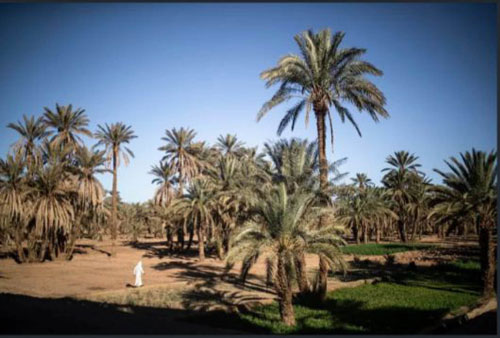Residents of the oasis of Alnif say they can’t re-member a drought this bad: The land is dry. Some wells are empty. Palm groves that date back more than 100 years are barren.
Home to centuries-old oases that have been a trademark of Morocco, this region about 170 miles southeast of Marrakesh is reeling from the effects of climate change, which has created an emergency for the kingdom’s agriculture.
Among those affected is Hammou Ben Ady, a nomad in the Tinghir region who leads his flock of sheep and goats in search of grazing grass. The drought forced him to rely on government handouts of fodder.
November is usually a cold, wet month in Alnif, but when the rain failed to come, the king called for rain prayers across the country, an old Islamic tradi-tion during desperately dry times.
Children led the procession, holding wooden planks inscribed with Quranic verses, followed by local officials and residents. They gathered near a dead oasis as a religious leader declared that the drought was a man-made disaster and that the rains will come when people atone for their sins and the way they have “treated the planet.”
Resident Mo’chi Ahmad said the oasis has pro-vided a livelihood for this population for hundreds of years. Now the oasis is “threatened with extinction,” and everyone notices the disappearing palm trees.
In the last three years, hundreds of people from oasis areas have fled toward cities and many young people have migrated toward Europe, mainly because of the drought, said Mohamed Bozama, another resident.
He also blames the digging of unauthorized wells and rising demand for water from existing wells for worsening the crisis.—APP










